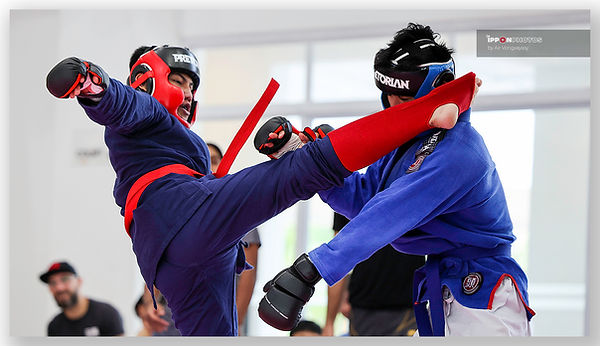
Mixed Martial Arts
Mixed Martial Arts (MMA) is a dynamic and multifaceted sport that combines elements from various martial arts and combat disciplines. It typically incorporates techniques from striking arts like boxing and Muay Thai, as well as grappling arts like Brazilian Jiu-Jitsu (BJJ) and wrestling. The result is a comprehensive fighting style that prepares practitioners for a wide range of scenarios, whether in competition or self-defense.
Benefits of MMA Classes:
Physical Fitness: MMA training provides a full-body workout that improves cardiovascular endurance, strength, flexibility, and coordination. The diverse range of techniques and drills ensures that every muscle group is engaged.
Self-Defense Skills: Learning MMA equips individuals with practical self-defense skills. The combination of striking and grappling techniques enables practitioners to defend themselves in various situations.
Mental Discipline: The training involved in MMA requires focus, determination, and mental toughness. It helps build confidence, resilience, and the ability to handle stress, both in and out of the gym.
Stress Relief: The physical exertion and mental focus required in MMA can be a great way to relieve stress. The intense workout can also lead to the release of endorphins, which improve mood and overall well-being.
Coordination and Agility: MMA training enhances motor skills, balance, and agility. These improvements are beneficial not just for fighting but for everyday activities.
Social Interaction: Joining an MMA class fosters a sense of community and camaraderie. Training with others who share similar goals can be motivating and supportive.
Versatility: Training in both Gi (traditional martial arts uniform) and no-Gi (athletic wear) provides versatility. Gi training emphasizes grips and submissions that rely on clothing, while no-Gi focuses on techniques that work without the use of a uniform. This broadens a practitioner's skill set and adaptability.
Gi vs. No-Gi:
Gi Training: Involves wearing a traditional martial arts uniform, which allows for grip-based techniques. This form of training often emphasizes leverage and technique using the gi's fabric, and is deeply rooted in Brazilian Jiu-Jitsu.
No-Gi Training: Involves wearing athletic clothing like rash guards and shorts, focusing on techniques that are more applicable in fast-paced, slippery situations. It tends to be more fluid and dynamic, reflecting more of the elements found in MMA.
Both Gi and no-Gi training offer unique advantages and complement each other, providing a well-rounded martial arts education. Whether you're looking to compete, enhance self-defense skills, or just improve your fitness, MMA offers a comprehensive and rewarding experience.









